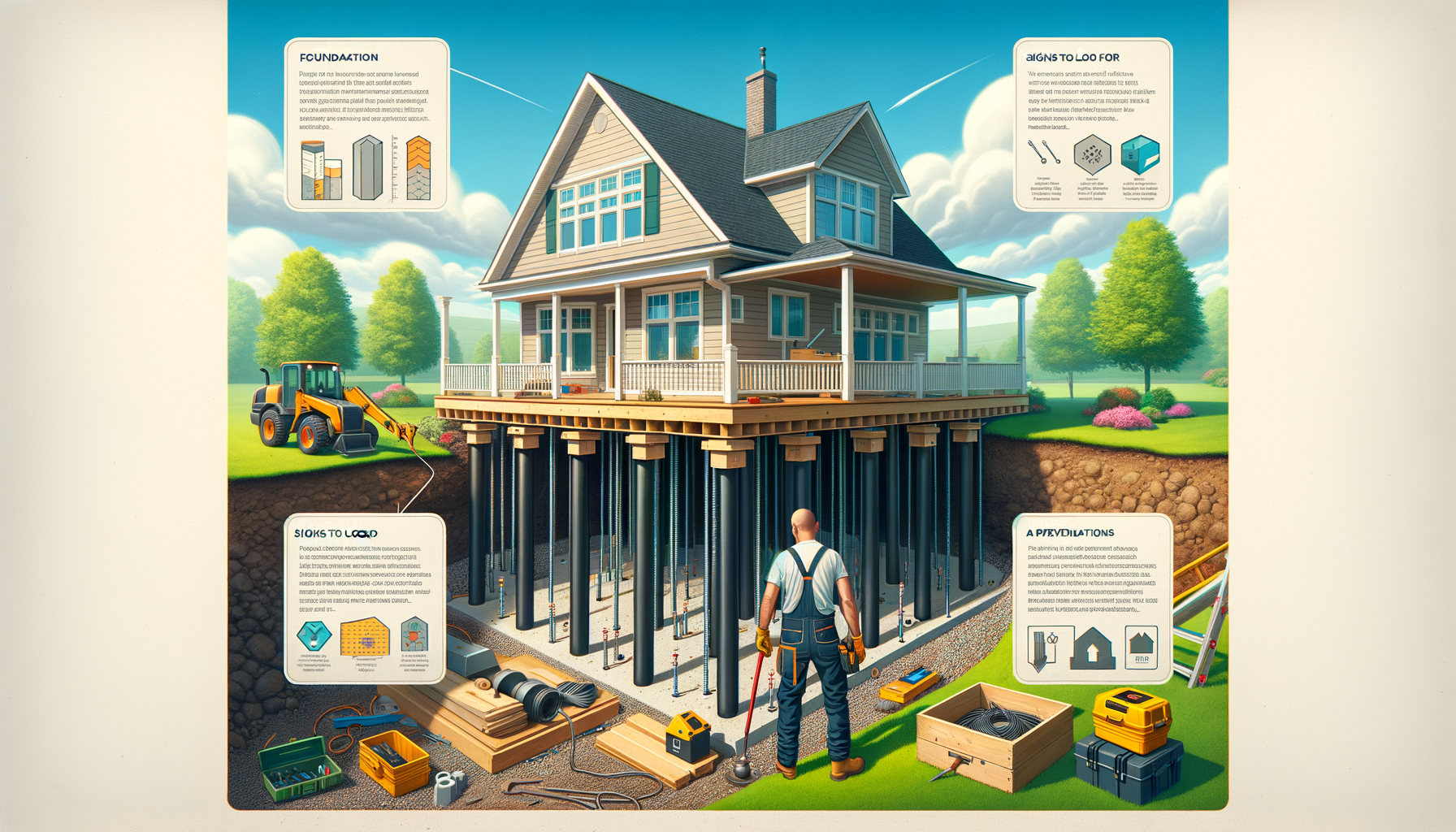Understanding Foundation Stabilization
What is Foundation Stabilization?
Foundation stabilization means making your home’s foundation stronger and more stable to stop or fix any sinking or damage.
Why It’s Important for Your Home
- Keeps your home safe and strong.
- Stops further damage.
- Keeps your home’s value high.
Common Causes of Foundation Problems
-
Soil Movement:
- Soils that swell when wet and shrink when dry can move and shift the foundation.
-
Moisture Issues:
- Poor drainage or plumbing leaks can make the soil wet and weaken the foundation over time.
-
Poor Construction:
- If the foundation was not built properly, it can get damaged faster.
Signs Your Foundation Needs Stabilization
- Cracks in Walls and Floors: Large cracks, especially wider than a quarter inch.
- Doors and Windows that Stick: Hard to open or close.
- Uneven or Sagging Floors: Floors that dip or aren’t level.
- Space Between Walls and Ceiling: Gaps where the wall meets the ceiling.
- Leaning Chimney or Porch: A tilted chimney or porch.
Foundation Stabilization Methods
Helical Piers
Steel shafts with spiral blades are screwed into stable soil to support the foundation. Best for homes with shallow foundations.
Push Piers
Steel tubes are pushed deep into the soil to reach bedrock, lifting and stabilizing the home. Great for heavy homes with big settling issues.
Slabjacking/Mudjacking
Pumping a mixture under the foundation to lift it. It’s cost-effective and quick but may not work for all soils or severe problems.
Wall Anchors
Rods are driven through the foundation wall and anchored in the soil, then plates and bolts stabilize the wall. Good for fixing walls pushed by soil pressure.
Carbon Fiber Reinforcement
Carbon fiber straps are bonded to walls to make them stronger without digging. It’s quick and not disruptive.
DIY vs. Professional Foundation Repair
When You Can Fix It Yourself
Small cracks can be sealed with DIY products, and minor surface-level issues can be patched up.
When to Call a Professional
Big structural problems, severe cracks, bowing walls, or major settlement need an expert.
Risks of Not Hiring a Professional
DIY fixes might not solve the main problem and can sometimes make things worse or unsafe.
Choosing the Right Foundation Repair Company
What to Look For
- Experience and Expertise: They should specialize in foundation repair.
- Licensing and Insurance: Make sure they are licensed and insured.
- Customer Reviews and Testimonials: Check what previous clients say.
Questions to Ask
- "What will the inspection process include?"
- "How long will the stabilization take?"
- "What kind of warranty do you offer?"
Preventative Measures to Maintain a Stable Foundation
Ensure Proper Drainage
- Use gutters and downspouts to direct water away from the foundation.
- Slope soil away from your house and consider drainage systems.
Soil Maintenance
- Keep soil moisture balanced: water during dry periods and improve drainage.
- Use mulch to retain moisture or install drainage if soil is too wet.
Regular Inspections
- Regularly check for signs of foundation trouble.
- Get professionals to inspect your foundation periodically.
Foundation Stabilization Costs
Factors Affecting Cost
- The type of repair needed.
- Extent of the damage.
- Geographic location.
Budgeting for Foundation Repair
- Repairs can range from a few thousand to tens of thousands of dollars.
- Look into payment plans and insurance coverage for repairs.
Resources and Further Reading
Government Resources
- Local building regulations: Check with your city or town.
- Provincial environmental guidelines: Look up rules on soil and water management.
Recommended Contractors
- Use local directories and review sites to find trusted companies in Canada.
Articles and Guides
- Detailed guides on foundation repairs: [Insert links]
- Educational videos on foundation maintenance: [Insert links]
This guide will help Canadian homeowners understand foundation stabilization and make smart choices about maintaining and fixing their home’s foundation.


Leave a Reply